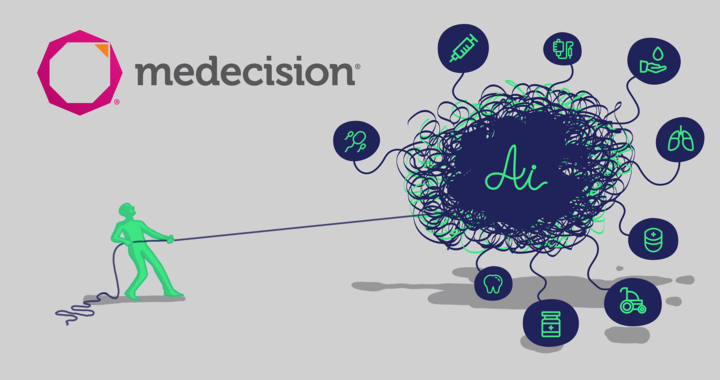
This piece was originally featured in Becker’s Payer Issues.
It’s conference season in the health IT sector and the topic resonating most with me on both sides of the United States is the difficult reality that health plans and health systems have a lot of data, are continuing to generate even more, but still struggle to leverage that information in real time as a strategic asset.
Managing so much data in real time is a challenge because it resides in different formats and systems. Often, that means health plans are unable to extract it from their connected providers and third-party partners, let alone parse and process it for analytics. But I’m also seeing reasons for optimism that health plans can effectively use their data in real time as interoperability standards mature, new regulations mandate data sharing, and digital care management evolves to meet the demand.
FHIR: The Future, Just Not by Itself
The Office of the National Coordinator for Health IT describes the September 2013 emergence of the Fast Healthcare Interoperability Resources specification as “a new way forward for health care data exchange.”[1] Today, the current iteration, FHIR 5, features interoperability capabilities for clinical care, public health, and research.[2] But even the latest FHIR framework is not yet fully mature in that many of the resources still need to be updated and very few are regulated.[3]
Industry-wide adoption of interoperability is important – but so is recognizing that FHIR is not comprehensive enough to solve all of our industry’s information exchange problems.[4] That leaves health plans and health systems operating with fragmented health data, which causes delays in accessing member or patient information, high costs associated with data silos, and a lack of data flowing into care management workflows. Consequences of fragmented data include failing to meet member or patient expectations, less efficient care management, and a greater risk of breaches or data leaks including sensitive information.[5]
Payer-to-Payer Exchange and Information Blocking Regulations
Although the U.S. Centers for Medicare and Medicaid Services is exercising discretion in how the agency enforces the payer-to-payer data exchange requirement within the CMS Interoperability and Patient Access final rule that enacted the requirement on Jan. 1, 2022, a range of health plans must prepare to be subject to enforcement at some point in the future. [6] And while the health information blocking regulation that took hold Sep. 1, 2023 does not include health plans, “they are not specifically excluded” and integrated delivery networks that meet the rule’s definition of healthcare providers are subject to penalties.[7]
Taken together, the payer-to-payer data exchange and information blocking rules offer a glimpse into a near future in which health plans simply no longer have the option of lacking the technical and cultural ability to share data.
The Evolution of Care Management
Digital care management is evolving into “any payer-driven efforts to engage with targeted members and their care ecosystems to encourage and enable high-value decisions,” according to McKinsey & Company. McKinsey recommends that next-generation care management should involve targeting multiple high potential sources of value, member engagement similar to a consumer company, right-sized care delivered to address member needs at a point in time, and deploying an operational mindset with metrics and digital automated processes.[8]
Health plans, in fact, need digital care management tools that extract relevant data in real time from a variety of sources – EHRs, ADTs, labs, pharmacy, claims, social determinants of health, among others – to create a 360-degree view of members. With that information integrated, payers can build and adjust health journeys that are personalized with next best action recommendations for health plan members, clinicians, and caregivers and enable care management teams to help all parties navigate transitions in care. Digital care management is particularly important given that approximately 80 percent of serious medical errors happen during transitions[9], and those can lead to adverse health events[10], as well as higher hospital readmission rates.[11] The ability for non-technical users to create campaigns personalized for individuals and populations is also critical to enabling health plans to make real time data actionable, expand the capacity of care teams, and meet high-risk, rising-risk and low-risk members more effectively.
Conclusion
As conference season gives way to the holidays and the year ahead, the prediction I will be keeping a close eye on is that demand for interoperable systems will have doubled in the first quarter of 2024 over 2019[12]. Whether it’s technically twice what it was five years ago or not, however, I’m certainly optimistic that the convergence of FHIR maturing even more, federal government regulations, and advanced digital care management technologies will empower health plans and care managers to deliver personalized campaigns to individuals and populations that increase member and patient engagement to improve outcomes and reduce healthcare costs. In today’s consumer-centric world, health plan customers are demanding a more personalized member experience and health plans must meet that demand.
Sources:
1. FHIR Version History and Maturity, HealthIT.gov
2. HL7 Publishes Release 5 of FHIR Standard, Healthcare Innovation
3. Priming for the future of health data interoperability with FHIR, Health Data Management
4. How FHIR 4 will drive interoperability progress in healthcare, HealthcareITNews
5. How health systems can transform fragmented healthcare data into a unified patient experience, HIT Consultant
6. Payer-to-Payer Data Exchange, the U.S. Centers for Medicare and Medicaid Services
7. Are health plans and other payers subject to the information blocking regulation? HealthIT.gov
8. The untapped potential of payer care management, McKinsey & Company
9. Lost in translation: challenges and opportunities in physician-to-physician communication during patient hand-offs, Academic Medicine
10. Adverse drug events occurring following hospital discharge Journal of General Internal Medicine
11. Medicare Payment Advisory Commission, Report to the Congress: Reforming the Delivery System, MedPAC
12. Frost & Sullivan predicts nearly 2x growth in interoperability market by 2024, HealthcareITNews



About The Author: Kenneth Young
Kenneth Young is an accomplished executive with a time-tested record of successful business performance. As the President and Chief Executive Officer of Medecision, he blends insightful business acumen with strategic planning and leadership to drive change and organizational improvements for growth. His expertise extends across diverse industries, including healthcare technology (ERP and SaaS), life sciences, manufacturing and professional services.
A skilled collaborator and leader, Ken’s experience spans executive roles in finance, operations and business transformation. At Medecision, he has held multiple roles critical to the company’s success, including Chief Financial Officer and Chief Transformation Officer. Ken spearheaded Medecision’s initiatives to enhance financial performance and new business development, accelerate business strategy and drive transformation as an ongoing opportunity that leads to lasting success.
As the Chief Operating Officer and Chief Financial Officer of Vidyo, a leader in video collaboration technology, Ken led the company’s strategies to enhance operational efficiencies, improve productivity and maximize profitability.
Prior to joining Medecision, as an experienced, results-oriented senior financial executive, Ken led high-growth public, private, US and multinational companies. While serving in leadership at Grant Thornton LLP, Ken was involved in several merger and acquisition transactions, and oversaw audit and business advisory services for public and private technology, manufacturing and service organizations.
More posts by Kenneth Young